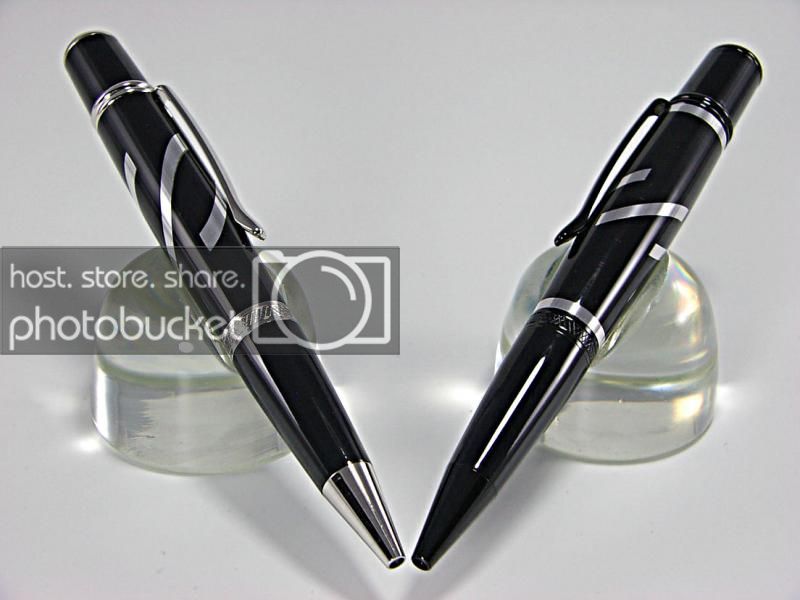Bob Wemm
Member
I posted my first attempt a few days ago and knew that I needed more metal in the mix.
This blank has 1000 +- 50 metal strips ranging from 1/32 to 1/8 wide and from 1 1/4 inches to 2 1/2 inches long. Each strip was twisted individually so that none of them sat flat against each other.
Clearly I need probably that many again to get the desired result.:redface::redface::redface:
So it seems that this one will be a pen, but no more.
I reckon the only way to get this look is by using Polymer Clay, and that will be my 3rd attempt.
Thanks for looking, C&C welcome.
Bob
This blank has 1000 +- 50 metal strips ranging from 1/32 to 1/8 wide and from 1 1/4 inches to 2 1/2 inches long. Each strip was twisted individually so that none of them sat flat against each other.
Clearly I need probably that many again to get the desired result.:redface::redface::redface:
So it seems that this one will be a pen, but no more.
I reckon the only way to get this look is by using Polymer Clay, and that will be my 3rd attempt.
Thanks for looking, C&C welcome.
Bob








